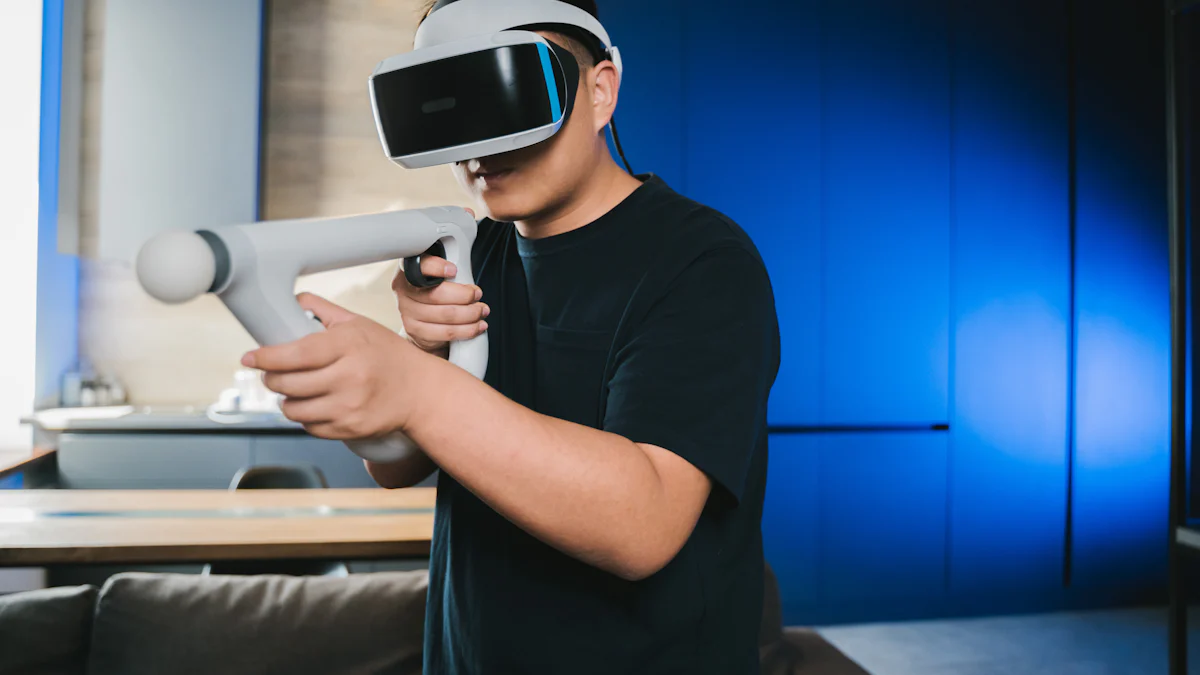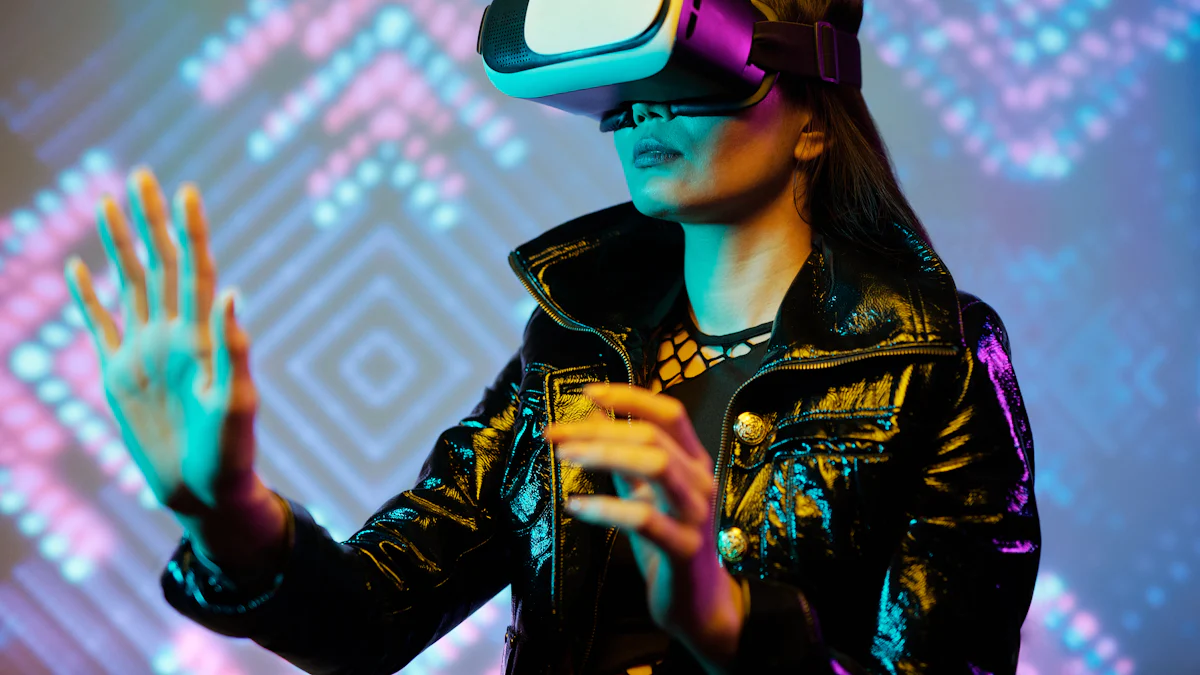How Virtual Reality Is Used for Mooring Training

Virtual reality (VR) has transformed modern training by providing immersive and interactive experiences. In the maritime industry, mooring training, which involves the use of mooring ropes, is crucial for ensuring safety and efficiency.
VR technology enhances this training by simulating real-world mooring scenarios, allowing trainees to practice operations in a risk-free environment.
This approach not only improves learning effectiveness by up to 76% but also accelerates the training process, completing it four times faster than traditional methods.
As a result, understanding how virtual reality is used for mooring training leads to higher engagement, better knowledge retention, and significant cost savings.
Understanding Virtual Reality in Training
What is Virtual Reality?
Definition and basic concepts
Virtual Reality (VR) creates a simulated environment that immerses users in a three-dimensional world. This technology uses computer-generated imagery to replicate real-world scenarios, allowing users to interact with the environment as if they were physically present.
VR systems typically include headsets, gloves, and motion sensors to enhance the immersive experience.
Historical development and advancements
The concept of VR dates back to the 1960s when Morton Heilig introduced the Sensorama, an early attempt at creating an immersive experience. Over the decades, VR technology has evolved significantly.
The 1990s saw the introduction of more sophisticated VR systems, but it wasn't until the 21st century that VR became widely accessible. Recent advancements have made VR more affordable and effective, leading to its integration into various fields, including training and education.
Why Use VR for Training?
Benefits over traditional training methods
VR training offers several advantages over traditional methods. It provides a safe environment where trainees can practice without the risk of real-world consequences. This approach allows learners to make mistakes and learn from them without fear of injury or damage.
Additionally, VR training can simulate complex scenarios that might be difficult or impossible to recreate in a physical setting.
Enhanced engagement and retention
Scientific Research Findings:
Studies show that VR training enhances engagement and retention. Learners trained with VR exhibit up to a 76% increase in learning effectiveness compared to traditional methods. This heightened engagement results from the immersive nature of VR, which captures the learner's attention and reduces distractions.
VR training also boosts confidence. According to research, learners trained using VR solutions complete their training four times faster than those in traditional classroom settings. They also demonstrate a 275% increase in confidence to apply what they've learned.
How Virtual Reality Is Used for Mooring Training

Setting Up a VR Training Program
Establishing a VR training program for mooring operations involves several critical steps. The process begins with acquiring the necessary equipment and software.
Required equipment and software
To implement a VR training program, organizations need specific hardware and software. Essential equipment includes VR headsets, motion sensors, and compatible computers. These devices create an immersive environment where trainees can interact with virtual mooring scenarios.
VR Mooring Simulator and Maritime VR Simulator represent popular choices in the maritime industry. They offer realistic simulations that enhance learning experiences.
Additionally, software platforms must support the creation and management of training modules. These platforms should allow trainers to design scenarios that replicate real-world mooring operations involving mooring ropes.
Steps to integrate VR into existing training
Integrating VR into existing training programs requires a structured approach. First, trainers should assess current training needs and identify areas where VR can add value. Next, they should develop VR modules that align with these needs.
Trainers can use Immersive Training Simulators to simulate various mooring scenarios. These simulators help trainees practice high-risk tasks safely. After developing the modules, trainers should conduct pilot sessions to gather feedback and make necessary adjustments.
Finally, they should implement the VR training program across the organization, ensuring all trainees have access to the required equipment and resources.
Designing Effective VR Training Modules
Creating effective VR training modules is crucial for maximizing the benefits of virtual reality in mooring training. These modules should focus on key elements that ensure successful learning outcomes.
Key elements of a successful module
Successful VR training modules incorporate several key elements. They should provide realistic simulations of mooring operations, allowing trainees to practice using mooring ropes in various scenarios.
Modules should also include interactive components that engage users and encourage active participation.
For instance, the Mooring Operations Safety VR training offers structured modules ranging from 10 to 15 minutes. This design ensures maximum focus without causing fatigue. Additionally, modules should offer feedback mechanisms that help trainees understand their performance and areas for improvement.
Customization for different training needs
Customization plays a vital role in designing VR training modules. Trainers should tailor modules to address specific training needs and objectives. For example, some trainees may require more practice with emergency procedures, while others might need to focus on routine mooring operations.
Customizable modules allow trainers to adjust scenarios and difficulty levels based on individual or group requirements. This flexibility ensures that all trainees receive the most relevant and effective training possible.
By understanding how virtual reality is used for mooring training, maritime organizations can enhance their training programs. VR technology offers a safe and efficient way to practice mooring operations, ultimately leading to improved safety and performance in real-world scenarios.
Benefits of VR in Mooring Training

Improved Safety and Risk Management
Virtual reality (VR) technology significantly enhances safety in mooring training. By simulating dangerous scenarios, trainees can practice handling high-risk situations without real-world consequences.
This immersive approach allows them to develop critical skills in a controlled environment. For instance, VR mooring simulators enable maritime professionals to experience lifelike emergencies, such as rope breakages or adverse weather conditions, safely.
These simulations prepare trainees for real-life challenges, reducing the likelihood of accidents.
"Future fatalities can be avoided while improving on traditional training, supporting existing crew training, and enhancing output safety awareness standards." - Maritime Educational Foundation (MEF)
VR training also contributes to reducing real-world accidents. Organizations implementing VR modules report significant decreases in workplace incidents.
By allowing trainees to repeatedly practice mooring operations, VR helps them refine their techniques and improve their decision-making skills. This repetitive practice leads to better preparedness and confidence, ultimately minimizing the risk of errors during actual mooring tasks.
Cost-Effectiveness and Efficiency
In addition to safety benefits, VR offers cost-effective solutions for mooring training. Traditional training methods often involve high expenses related to equipment, travel, and instructor fees.
VR technology reduces these costs by providing a virtual platform where trainees can learn and practice without the need for physical resources. Over time, organizations save money by minimizing the need for expensive training setups.
Moreover, VR accelerates skill acquisition. Trainees using VR complete their training faster than those in conventional settings. The immersive nature of VR captures their attention and enhances engagement, leading to quicker learning. As a result, maritime professionals become proficient in mooring operations more rapidly, allowing them to transition to real-world tasks sooner.
"Reducing risks associated with real-world training scenarios and improving operational efficiency." - Realistic VR Training Scenarios for Maritime Professionals
The efficiency of VR training extends beyond individual skill development. By streamlining the training process, organizations can train more personnel in less time, increasing overall productivity. This efficiency ensures that maritime operations run smoothly, with well-prepared crews ready to handle mooring challenges effectively.
Challenges and Solutions in VR Mooring Training
Technical Challenges
Overcoming hardware limitations
Virtual reality (VR) training in mooring operations faces several technical challenges. One significant issue involves hardware limitations. VR systems require high-performance equipment to deliver immersive experiences.
Many organizations struggle with outdated or insufficient hardware, which can hinder the effectiveness of VR training. To address this, companies should invest in modern VR headsets and compatible computers. Regular updates and maintenance ensure that the equipment functions optimally, providing trainees with a seamless experience.
Ensuring software compatibility
Software compatibility presents another challenge in VR mooring training. Different VR platforms may not support all training modules, leading to inconsistencies in the learning experience. Organizations must select software that aligns with their training objectives and integrates smoothly with existing systems.
Collaborating with VR developers can help tailor software solutions to meet specific needs. By ensuring compatibility, maritime organizations can maximize the benefits of VR training and provide a consistent learning environment for all trainees.
Human Factors
Addressing user resistance
Human factors also play a crucial role in the successful implementation of VR mooring training. Some trainees may resist adopting new technology due to unfamiliarity or skepticism about its effectiveness. To overcome this resistance, organizations should emphasize the advantages of VR training, such as enhanced engagement and improved skill development. Expert Testimony:
"With VR learning, users are significantly less distracted. In a VR headset, simulations and immersive experiences command the individual’s vision and attention." - Unknown, Virtual Reality Training Expert
Providing demonstrations and success stories can further illustrate the value of VR training, encouraging trainees to embrace the technology.
Ensuring accessibility for all trainees
Ensuring accessibility for all trainees is essential in VR mooring training. Some individuals may face challenges related to physical disabilities or limited technological proficiency. Organizations should offer support and accommodations to address these issues.
This may include providing alternative training methods or offering additional guidance for those unfamiliar with VR technology. By prioritizing accessibility, maritime organizations can create an inclusive training environment that benefits all participants.
Future of VR in Mooring Training
Emerging Trends and Technologies
Integration with AI and machine learning
Virtual reality (VR) in mooring training continues to evolve with the integration of artificial intelligence (AI) and machine learning. These technologies enhance VR simulations by making them more adaptive and responsive to trainees' actions.
AI algorithms analyze trainees' performance, providing real-time feedback and personalized learning paths. This dynamic approach ensures that each trainee receives tailored guidance, improving skill acquisition and retention.
Machine learning further refines VR training by predicting potential challenges trainees might face. By analyzing data from previous sessions, machine learning models identify patterns and suggest improvements. This predictive capability allows trainers to address specific areas where trainees may struggle, ensuring comprehensive skill development.
Potential for augmented reality applications
Augmented reality (AR) presents exciting possibilities for mooring training. Unlike VR, which creates entirely virtual environments, AR overlays digital information onto the real world. This technology can enhance mooring training by providing trainees with real-time data and visual cues during actual operations.
For example, AR can display safety guidelines or highlight potential hazards, helping trainees make informed decisions.
The combination of AR and VR creates a mixed-reality experience that bridges the gap between virtual simulations and real-world applications. This integration allows trainees to practice mooring operations in a controlled environment while receiving contextual information relevant to their tasks.
As AR technology advances, its applications in mooring training will likely expand, offering new ways to enhance learning and safety.
Long-term Impact on the Maritime Industry
Shaping future training standards
The adoption of VR in mooring training sets new standards for maritime education. Traditional training methods often rely on static materials and limited hands-on experiences. In contrast, VR offers immersive simulations that replicate real-world scenarios, providing trainees with practical skills and knowledge. As VR technology becomes more prevalent, it will likely influence the development of future training curricula, emphasizing experiential learning and interactive modules.
Maritime organizations recognize the value of VR in preparing seafarers for complex ship environments. By incorporating VR into their training programs, these organizations ensure that their personnel possess the necessary skills to navigate modern vessels safely and efficiently. This shift towards VR-based training reflects a broader trend in the maritime industry, where technology plays an increasingly vital role in shaping educational practices.
Broader implications for maritime safety
The long-term impact of VR in mooring training extends beyond individual skill development. By enhancing trainees' ability to handle high-risk situations, VR contributes to overall maritime safety. Simulations allow trainees to practice emergency procedures and risk assessment, reducing the likelihood of accidents during actual operations. This proactive approach to safety training aligns with the industry's commitment to minimizing incidents and protecting personnel.
Moreover, VR's cost-effectiveness and efficiency make it an attractive option for maritime organizations seeking to optimize their training programs. By reducing training costs and accelerating skill acquisition, VR enables organizations to allocate resources more effectively, ultimately improving operational performance. As VR technology continues to advance, its role in promoting maritime safety and efficiency will likely grow, benefiting the industry as a whole.
Virtual reality (VR) in mooring training offers numerous benefits, including enhanced safety, cost-effectiveness, and improved learning outcomes. Maritime organizations should embrace VR technology to revolutionize their training programs. By adopting VR, they can provide immersive and realistic simulations that prepare professionals for real-world challenges.
"VR technology offers immersive and realistic simulation experiences that enable maritime professionals to train in a safe and controlled environment."
The future of maritime training looks promising with VR's potential to transform operations and safety practices. As the industry continues to innovate, VR will play a crucial role in shaping training standards and improving maritime safety.
FAQs:
How does VR improve mooring training?
VR provides a safe, immersive environment for practicing complex scenarios, enhancing situational awareness and decision-making skills.
Is VR training cost-effective?
Yes, it reduces the need for physical equipment and travel expenses, streamlining onboarding and upskilling processes.
What challenges exist in implementing VR training?
Technical challenges like hardware limitations and user resistance can be addressed with proper investment and education.



